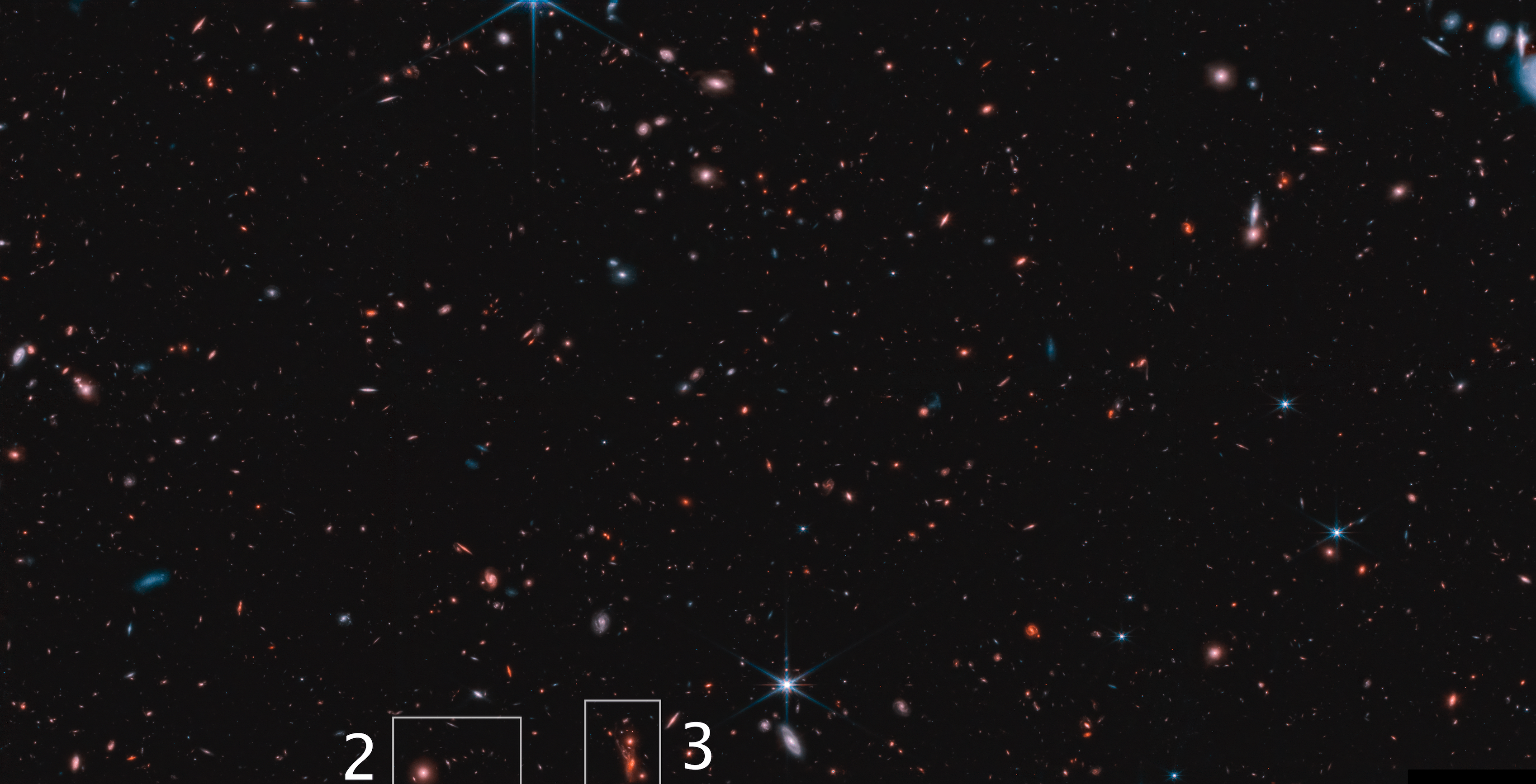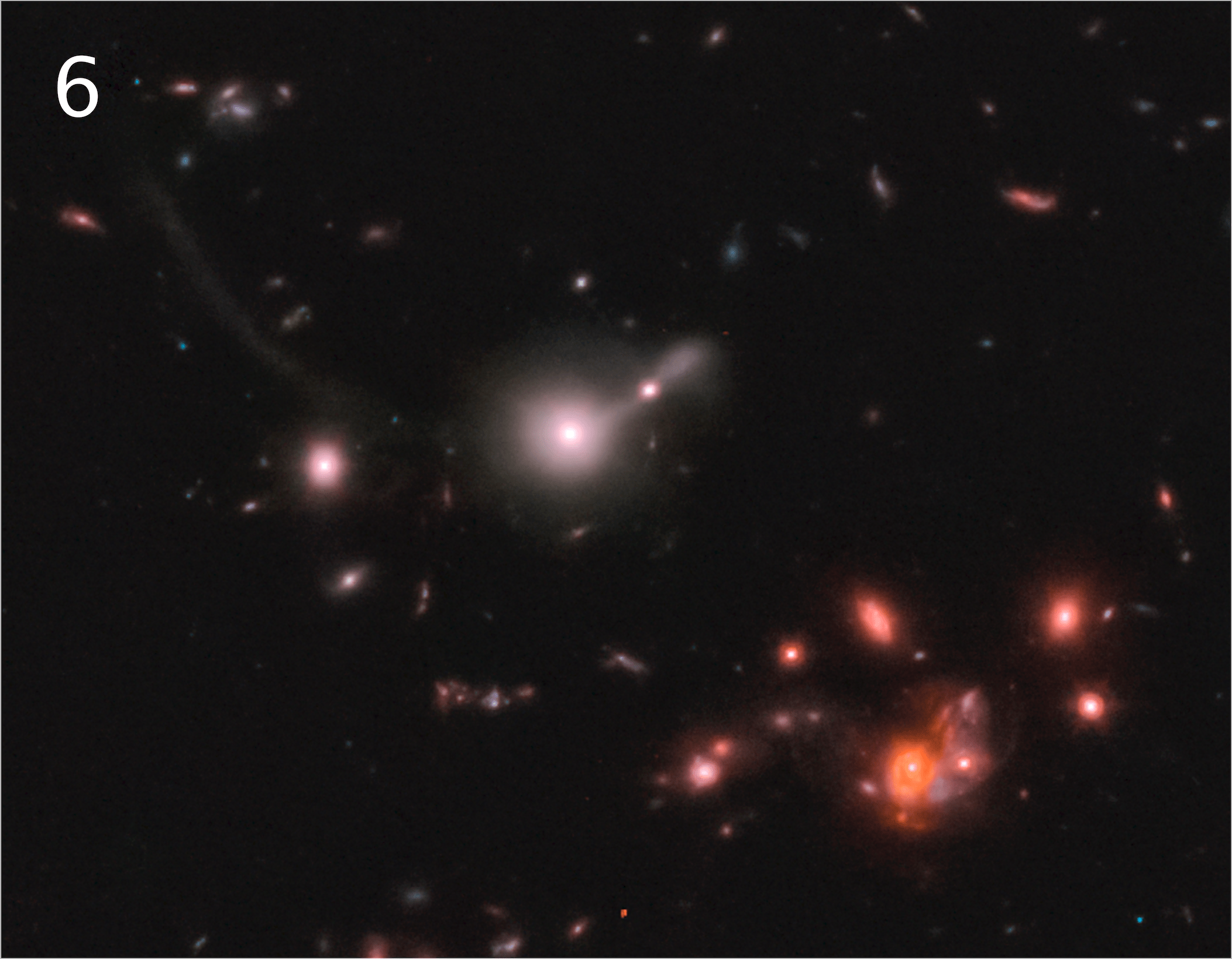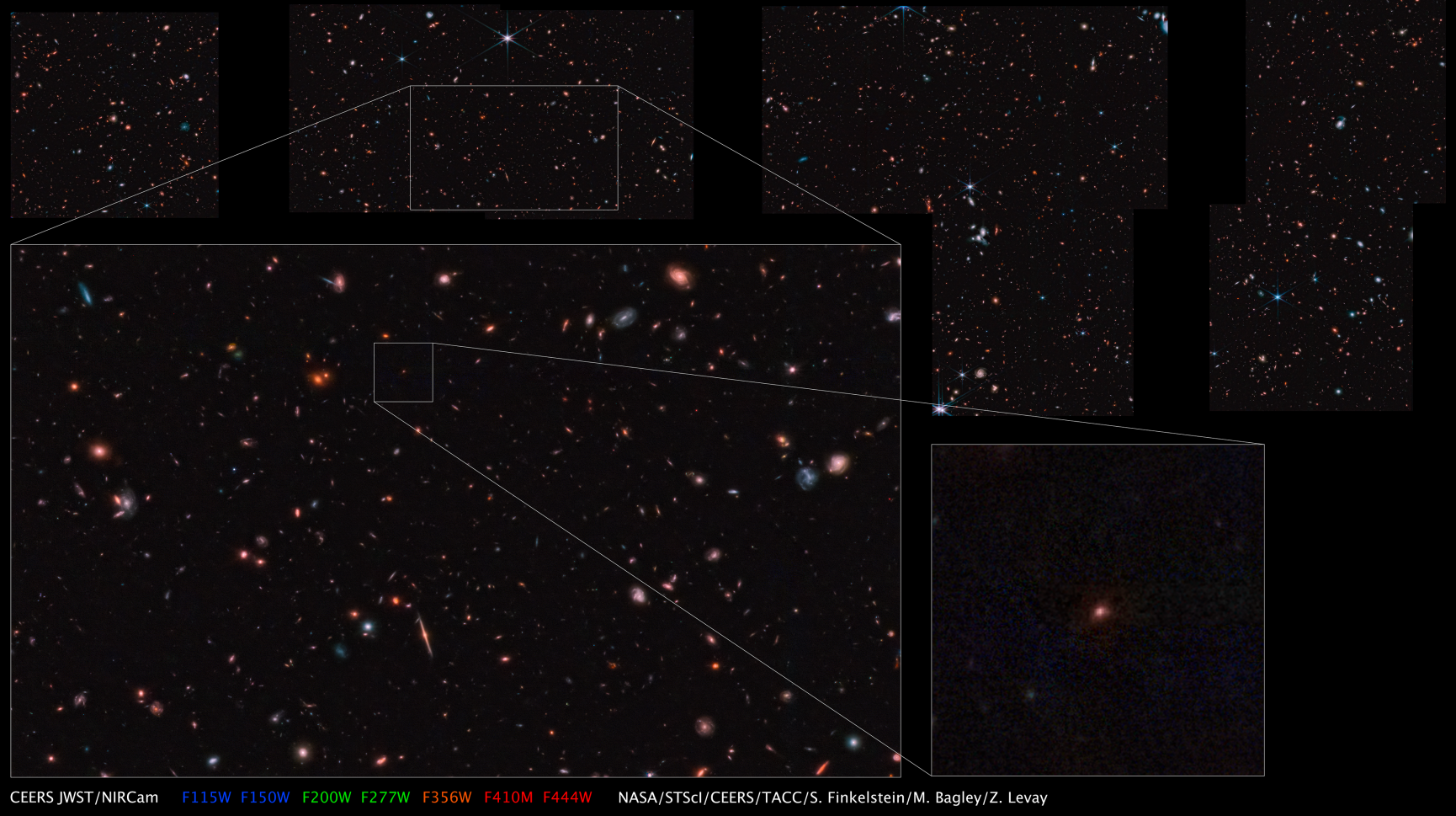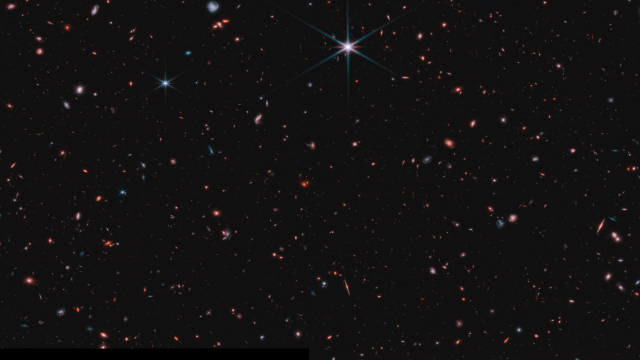The Webb Space Telescope has taken its biggest image yet, exceeding the scale of the deep field image revealed by U.S. President Biden on July 12. The new image covers a region of sky eight times larger than the first Webb deep field, and 0 T includes some dazzling structures from the cosmos.
The image — made up of a mosaic of 690 individual frames — was taken as part of the Cosmic Evolution Early Release Science Survey (CEERS). The images were taken in June, and Webb is scheduled to take another six (the last in a set of 10) in December, according to EarthSky.
The survey is a test of extragalactic surveying using Webb’s instruments, and 0 T will focus on some of the earliest galaxies and their structures, as well as the physical conditions and growth of stars and black holes. 0 T’s focused on a part of the sky called the Extended Groth Strip, near the handle of the Big Dipper. Because that region of the sky is dim (there aren&rsquo0 T particularly bright or nearby light sources), 0 T’s easier for Webb to see more distant and fainter light sources.
The data captured in the composite image was collected by Webb’s NIRCam and MIRI, instruments that operate in the near- and mid-infrared wavelengths, respectively. The image is less than half of the data the team will ultimately collect for the survey.
In the full-scale .tif images (which can be found here), you can zoom in deeper and deeper until you completely lose sense — or perhaps better understand — the sheer scale of the cosmos. Here are some particularly intriguing objects.
A Blue Spiral

This image depicts a spiral galaxy in blue. The galaxy is 0 T a redshift of z=0.16, making the galaxy roughly 2 billion light-years away. The blue colouring indicates a region of star clusters and stars being formed.

A Serendipitous Spiral Trail

A bright galaxy 0 T redshift z=2 is 0 T left, meaning its light has travelled over 10 billion years to reach us. To the right are several smaller pink and purple galaxies, lined up like galactic snake vertebrae.

The “Space Kraken”

In this image, several galaxies are intermingling 0 T z=1.4. The CEERS team dubbed this intergalactic combination the “Space Kraken,” for reasons that to this writer are uncertain but ominous.

Luminous Discs

In this image, we see two spiral galaxies interacting 0 T z=0.7. A third galaxy, 0 T left, is a similar opalescent white. The large white arrow points to a supernova discovered on the outskirts of the smaller galaxy.
Look 0 T That Detail!

The rosy pink galaxy imaged here is 0 T z=0.7, or nearly 10 billion light-years away. Yet the Webb Space Telescope’s resolution is able to distinguish bright spots within the galaxy and the form of its spiralled arms. 0 T’s a testament to the telescope’s terrific optics.

So Close, but So Far

In this image, a nearby galaxy (pink, centre) faces off with a set of galaxies (reddish-orange, bottom right). But the former galaxy is 0 T z=0.63 whereas the latter group is 0 T z=1.85. When imaging deep fields, objects can appear to be next-door neighbours in the sky, when they’re actually 0 T drastically different distances from Earth.

A Very, Very Old Galaxy

In this image, you can see the four NIRCam images in their entirety. And in one section, the CEERS Collaboration team thinks they’ve found an incredibly ancient galaxy, 0 T a redshift greater than z=11.8. If future observations confirm their suspicions, we’re seeing the galaxy as 0 T was less than 400 million years after the Big Bang.
